Full text
PDF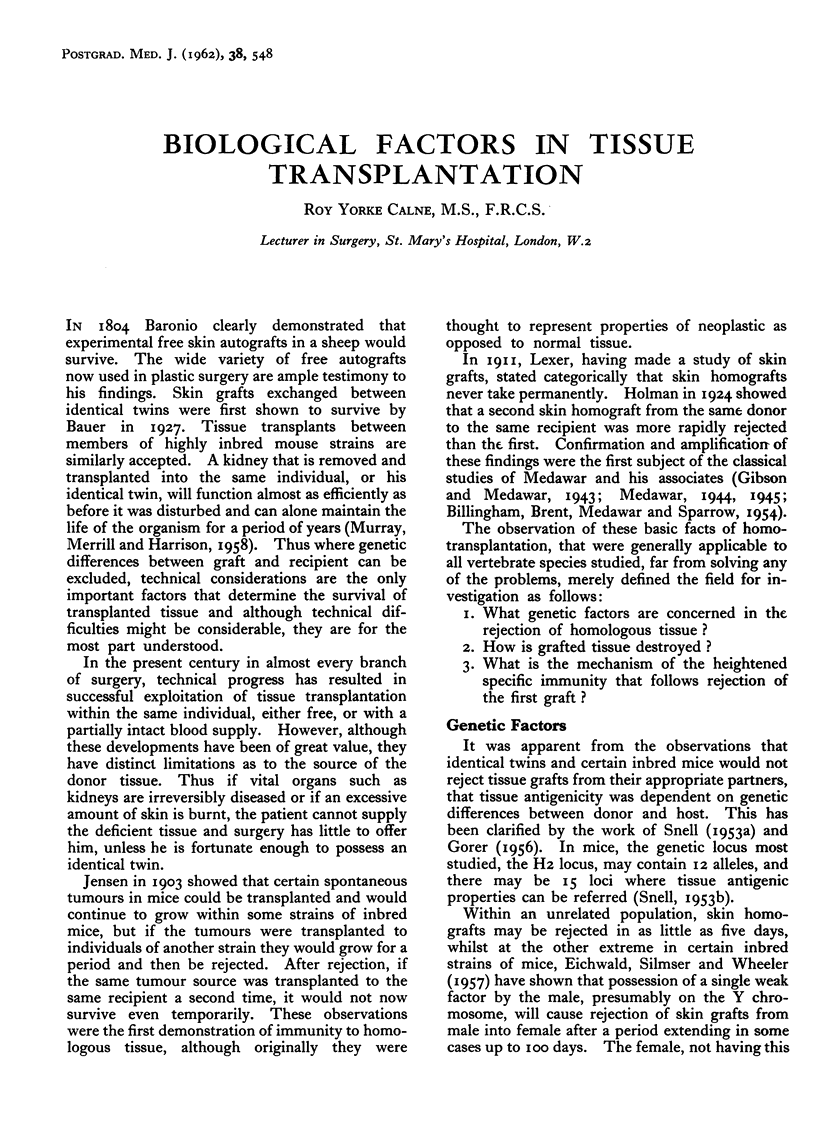

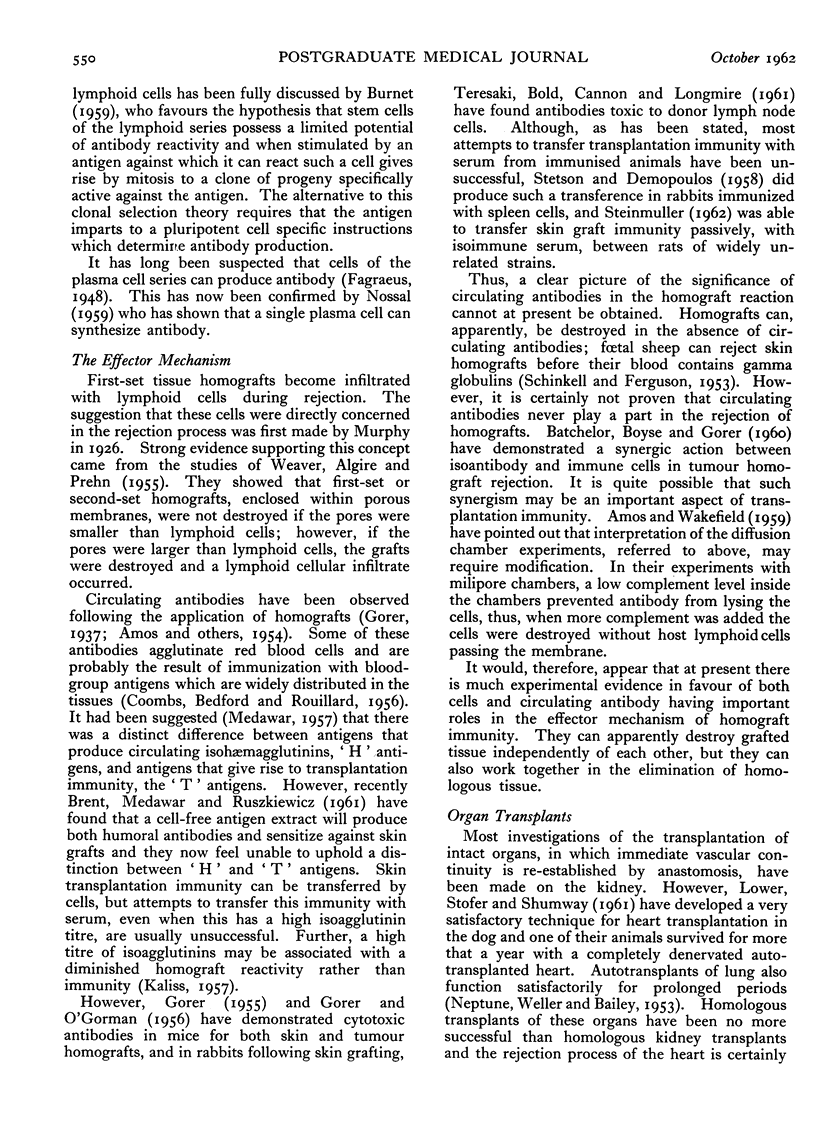

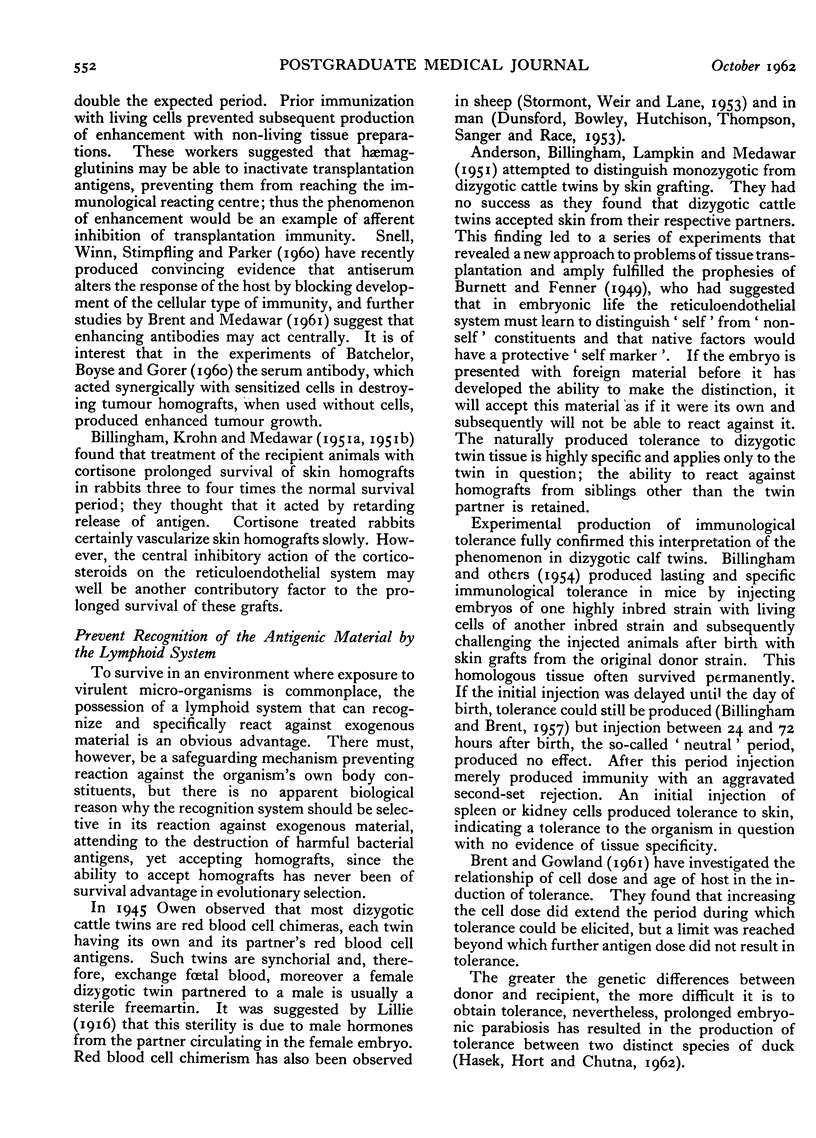
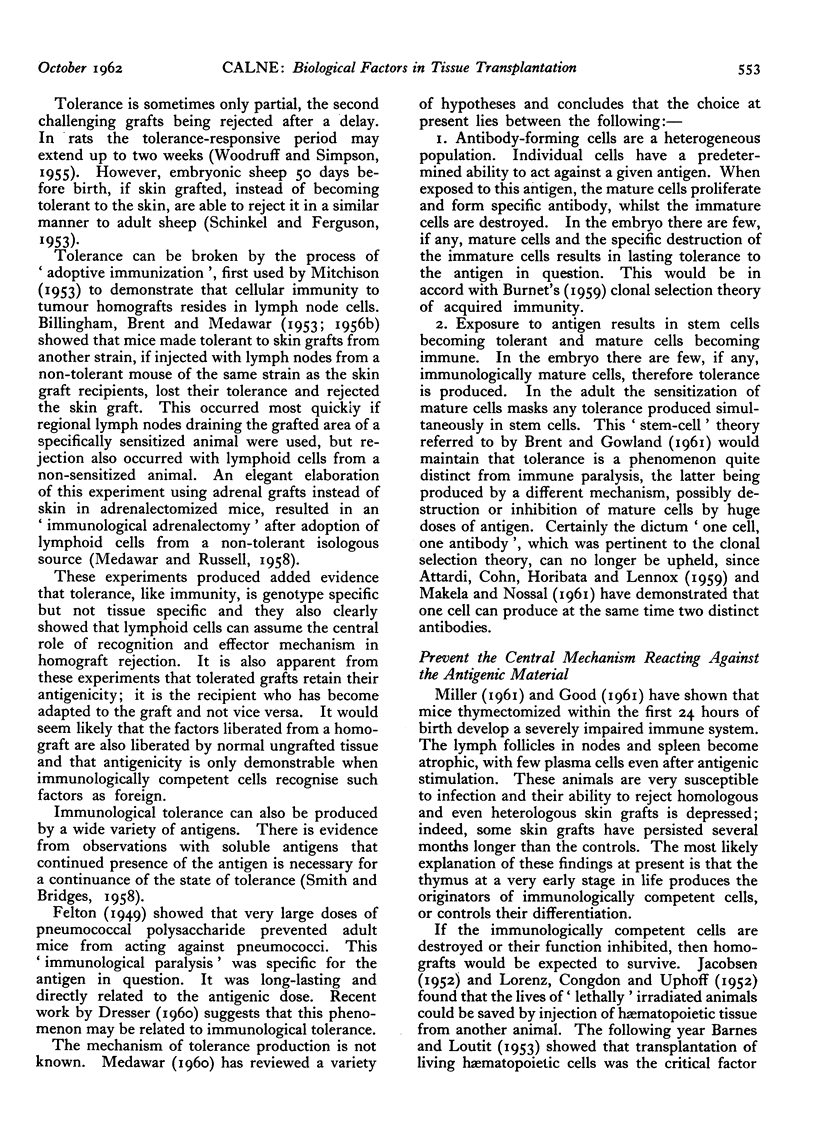
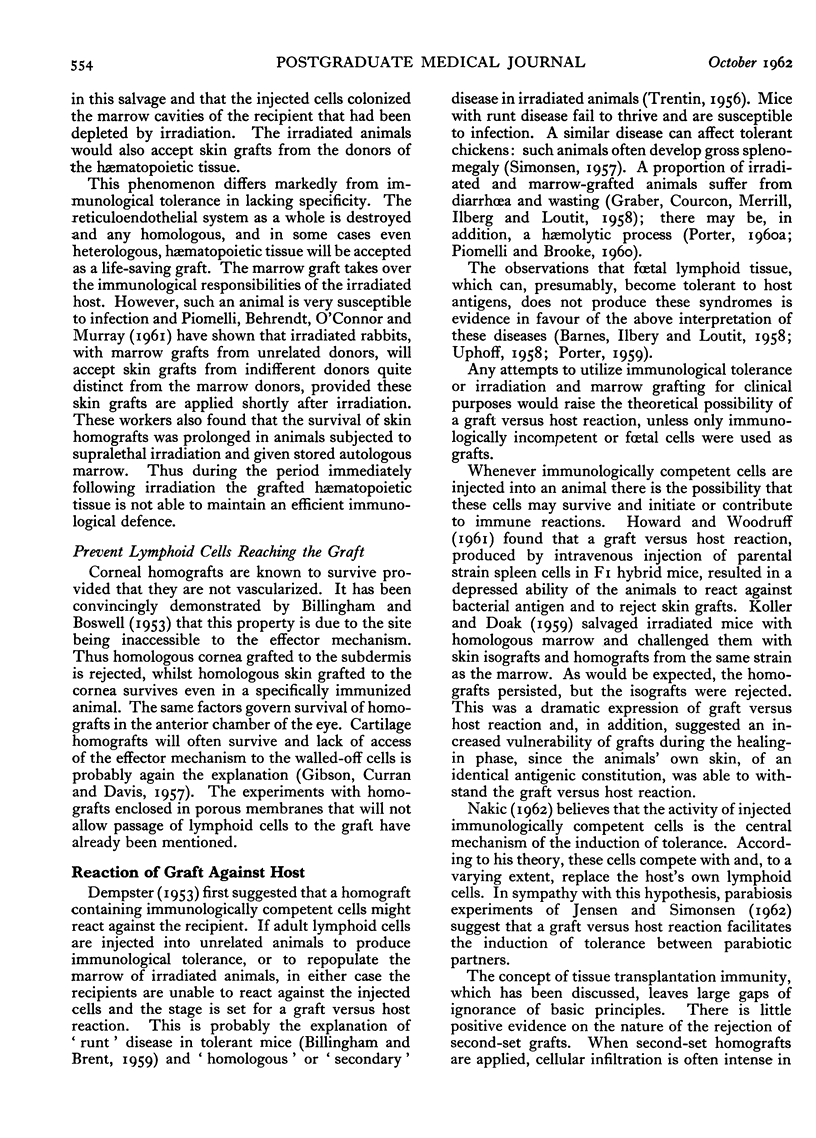
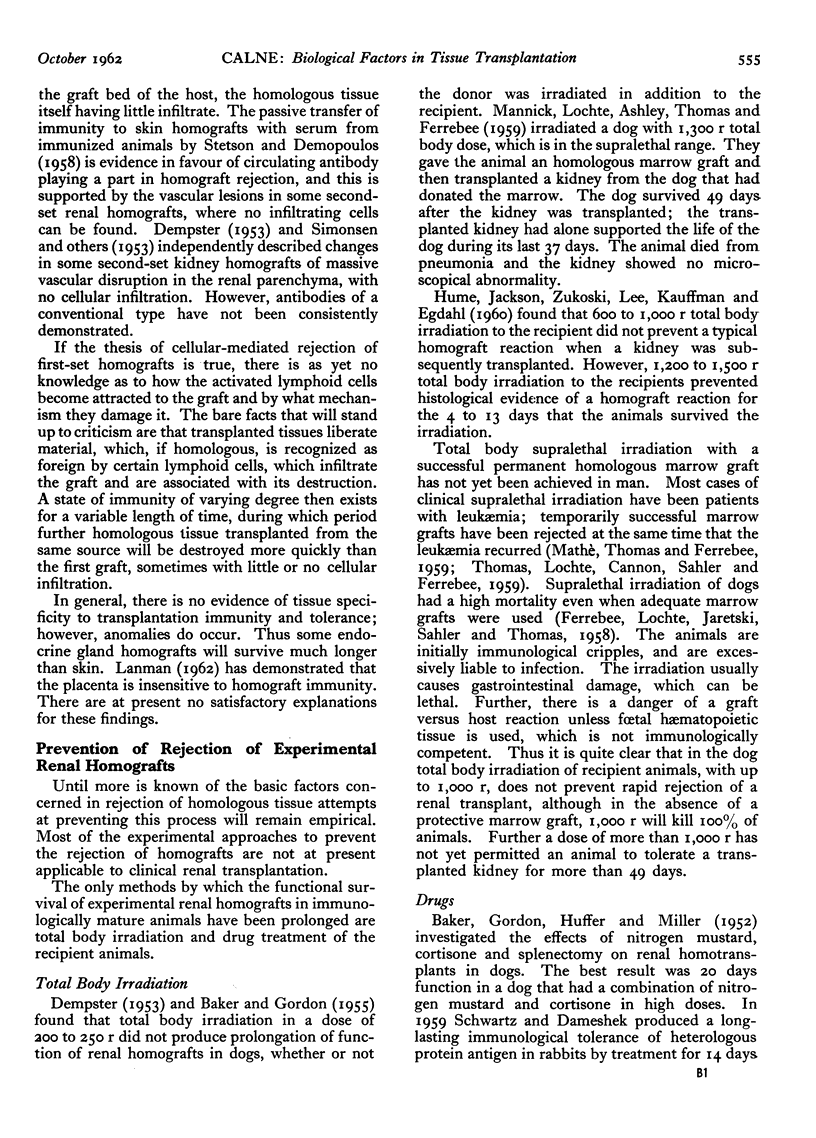
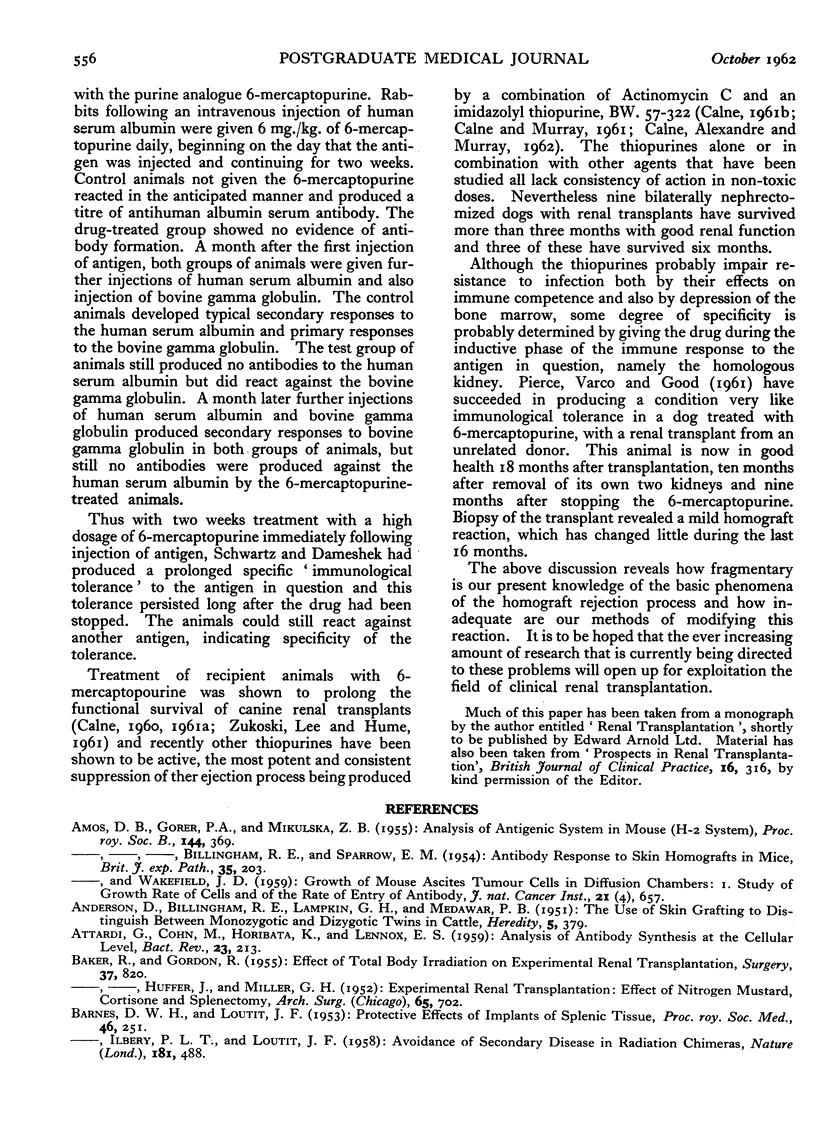

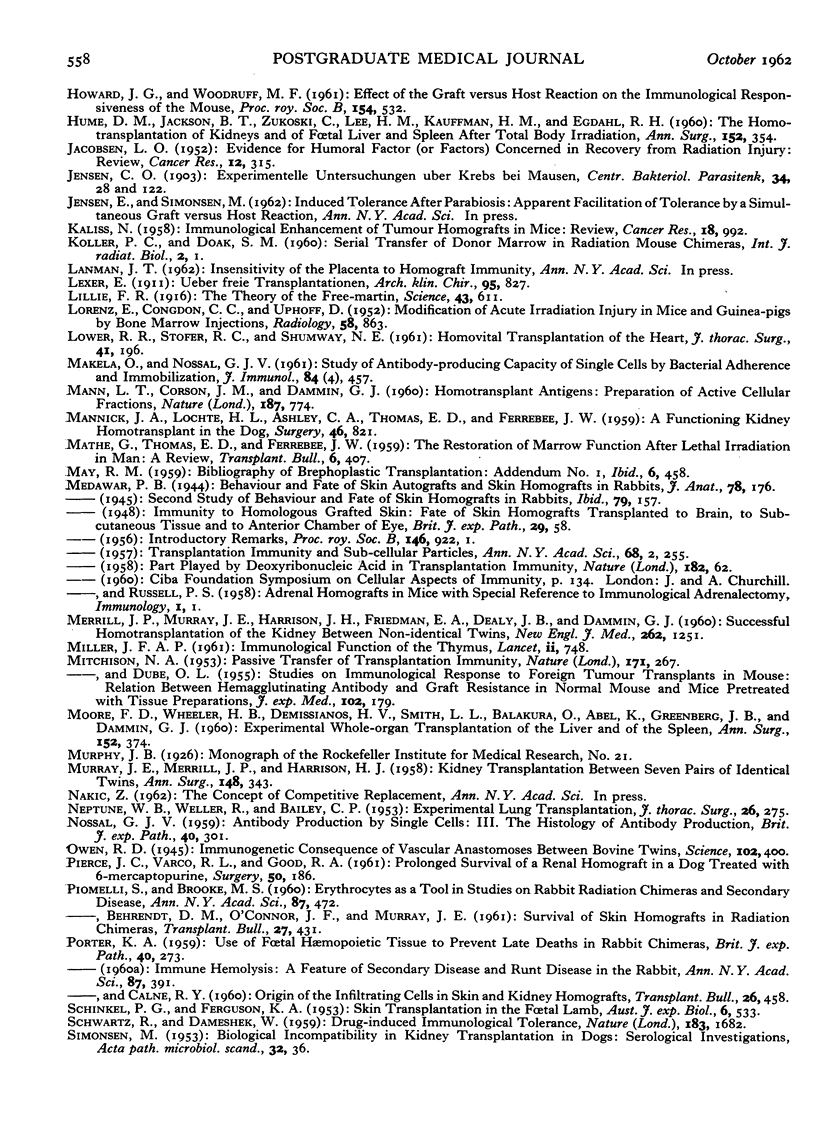
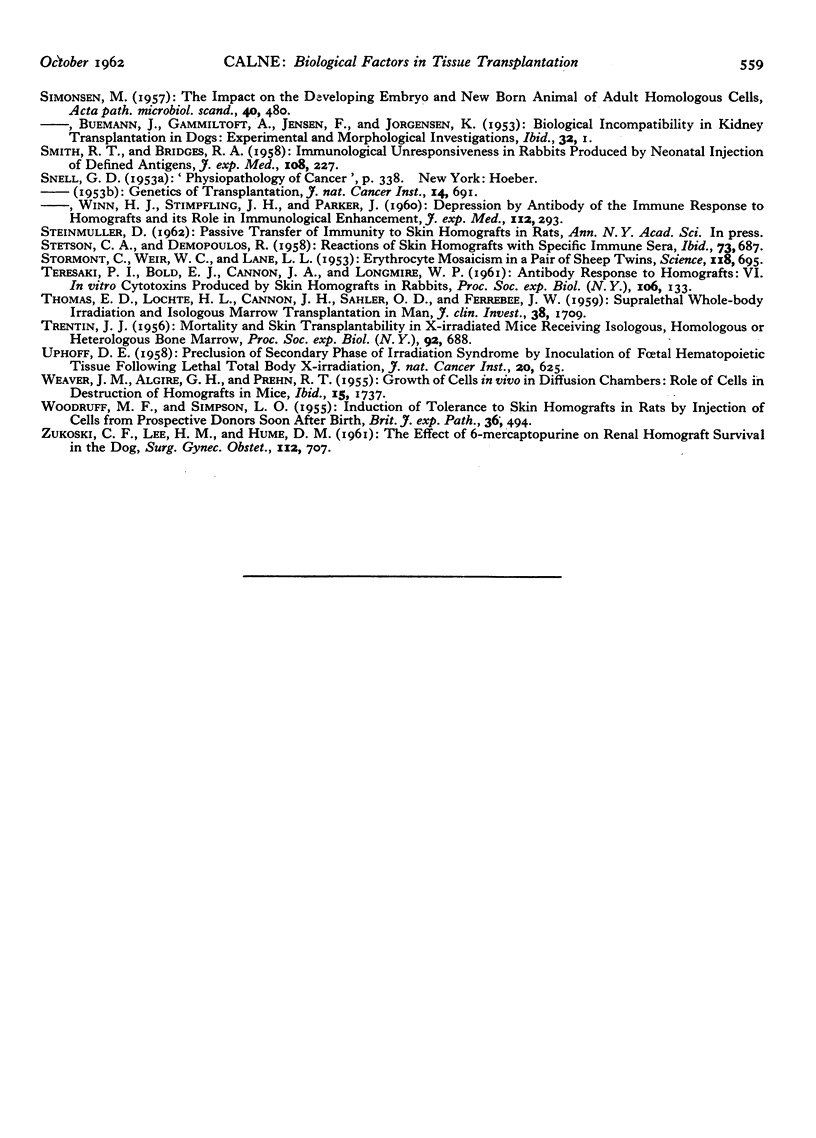
Selected References
These references are in PubMed. This may not be the complete list of references from this article.
- AMOS D. B., GORER P. A., MIKULSKA B. M., BILLINGHAM R. E., SPARROW E. M. An antibody response to skin homografts in mice. Br J Exp Pathol. 1954 Apr;35(2):203–208. [PMC free article] [PubMed] [Google Scholar]
- AMOS D. B., GORER P. A., MIKULSKA Z. B. An analysis of an antigenic system in the mouse (the H-2 system). Proc R Soc Lond B Biol Sci. 1955 Nov 29;144(916):369–380. doi: 10.1098/rspb.1955.0064. [DOI] [PubMed] [Google Scholar]
- AMOS D. B., WAKEFIELD J. D. Growth of mouse ascites tumor cells in diffusion chambers. I. Studies of growth rate of cells and of the rate of entry of antibody. J Natl Cancer Inst. 1958 Oct;21(4):657–670. [PubMed] [Google Scholar]
- ATTARDI G., COHN M., HORIBATA K., LENNOX E. S. Symposium on the biology of cells modified by viruses or antigens. II. On the analysis of antibody synthesis at the cellular level. Bacteriol Rev. 1959 Dec;23(4):213–223. doi: 10.1128/br.23.4.213-223.1959. [DOI] [PMC free article] [PubMed] [Google Scholar]
- BAKER R., GORDON R. Effect of total body irradiation on experimental renal transplantation. Surgery. 1955 May;37(5):820–822. [PubMed] [Google Scholar]
- BAKER R., GORDON R., HUFFER J., MILLER G. H., Jr Experimental renal transplantation: I. Effect of nitrogen mustard, cortisone, and splenectomy. AMA Arch Surg. 1952 Nov;65(5):702–705. doi: 10.1001/archsurg.1952.01260020694008. [DOI] [PubMed] [Google Scholar]
- BARNES D. W. H., LOUTIT J. F. Protective effects of implants of splenic tissue. Proc R Soc Med. 1953 Apr;46(4):251–252. [PubMed] [Google Scholar]
- BARNES D. W., ILBERY P. L., LOUTIT J. F. Avoidance of secondary disease in radiation chimaeras. Nature. 1958 Feb 15;181(4607):488–488. doi: 10.1038/181488a0. [DOI] [PubMed] [Google Scholar]
- BATCHELOR J. R., BOYSE E. A., GORER P. A. Synergic action between isoantibody and immune cells in graft rejection. Transplant Bull. 1960 Oct;26:449–453. doi: 10.1097/00006534-196010000-00037. [DOI] [PubMed] [Google Scholar]
- BILLINGHAM R. E., BOSWELL T. Studies on the problem of corneal homografts. Proc R Soc Lond B Biol Sci. 1953 Jul 15;141(904):392–406. doi: 10.1098/rspb.1953.0049. [DOI] [PubMed] [Google Scholar]
- BILLINGHAM R. E., BRENT L., MEDAWAR P. B. Actively acquired tolerance of foreign cells. Nature. 1953 Oct 3;172(4379):603–606. doi: 10.1038/172603a0. [DOI] [PubMed] [Google Scholar]
- BRENT L., GOWLAND G. Cellular dose and age of host in the induction of tolerance. Nature. 1961 Dec 30;192:1265–1267. doi: 10.1038/1921265a0. [DOI] [PubMed] [Google Scholar]
- BRENT L., MEDAWAR P. B., RUSZKIEWICZ M. Serological methods in the study of transplantation antigens. Br J Exp Pathol. 1961 Oct;42:464–477. [PMC free article] [PubMed] [Google Scholar]
- CASEY A. E., MEYERS L., DRYSDALE G. R. Intratesticular versus subcutaneous transplantation of Brown-Pearce tumor in New Zealand whites. Proc Soc Exp Biol Med. 1948 Dec;69(3):576–579. doi: 10.3181/00379727-69-16793. [DOI] [PubMed] [Google Scholar]
- DEMPSTER W. J. Kidney homotransplantation. Br J Surg. 1953 Mar;40(163):447–465. doi: 10.1002/bjs.18004016309. [DOI] [PubMed] [Google Scholar]
- EICHWALD E. J., SILMSER C. R., WHEELER N. The genetics of skin grafting. Ann N Y Acad Sci. 1957 Mar 22;64(5):737–740. doi: 10.1111/j.1749-6632.1957.tb52469.x. [DOI] [PubMed] [Google Scholar]
- GIBSON T., CURRAN R. C., DAVIS W. B. The survival of living homograft cartilage in man. Transplant Bull. 1957 Jul;4(3):105–106. [PubMed] [Google Scholar]
- Gibson T., Medawar P. B. The fate of skin homografts in man. J Anat. 1943 Jul;77(Pt 4):299–310.4. [PMC free article] [PubMed] [Google Scholar]
- HERZENBERG L. A., HERZENBERG L. A. Association of H-2 antigens with the cell membrane fraction of mouse liver. Proc Natl Acad Sci U S A. 1961 Jun 15;47:762–767. doi: 10.1073/pnas.47.6.762. [DOI] [PMC free article] [PubMed] [Google Scholar]
- HUME D. M., JACKSON B. T., ZUKOSKI C. F., LEE H. M., KAUFFMAN H. M., EGDAHL R. H. The homotransplantation of kidneys and of fetal liver and spleen after total body irradiation. Ann Surg. 1960 Sep;152:354–373. [PMC free article] [PubMed] [Google Scholar]
- LORENZ E., CONGDON C., UPHOFF D. Modification of acute irradiation injury in mice and guinea-pigs by bone marrow injections. Radiology. 1952 Jun;58(6):863–877. doi: 10.1148/58.6.863. [DOI] [PubMed] [Google Scholar]
- MANNICK J. A., LOCHTE H. L., Jr, ASHLEY C. A., THOMAS E. D., FERREBEE J. W. A functioning kidney homotransplant in the dog. Surgery. 1959 Oct;46:821–828. [PubMed] [Google Scholar]
- MATHE G., THOMAS E. D., FERREBEE J. W. The restoration of marrow function after lethal irradiation in man: a review. Transplant Bull. 1959 Oct;6:407–409. doi: 10.1097/00006534-195910000-00034. [DOI] [PubMed] [Google Scholar]
- MITCHISON N. A. Passive transfer of transplantation immunity. Nature. 1953 Feb 7;171(4345):267–268. doi: 10.1038/171267b0. [DOI] [PubMed] [Google Scholar]
- MOORE F. D., WHEELE H. B., DEMISSIANOS H. V., SMITH L. L., BALANKURA O., ABEL K., GREENBERG J. B., DAMMIN G. J. Experimental whole-organ transplantation of the liver and of the spleen. Ann Surg. 1960 Sep;152:374–387. [PMC free article] [PubMed] [Google Scholar]
- MTTCHISON N. A., DUBE O. L. Studies on the immunological response to foreign tumor transplants in the mouse. II. The relation between hemagglutinating antibody and graft resistance in the normal mouse and mice pretreated with tissue preparations. J Exp Med. 1955 Aug 1;102(2):179–197. doi: 10.1084/jem.102.2.179. [DOI] [PMC free article] [PubMed] [Google Scholar]
- MURRAY J. E., MERRILL J. P., HARRISON J. H. Kidney transplantation between seven pairs of identical twins. Ann Surg. 1958 Sep;148(3):343–359. doi: 10.1097/00000658-195809000-00004. [DOI] [PMC free article] [PubMed] [Google Scholar]
- Medawar P. B. A second study of the behaviour and fate of skin homografts in rabbits: A Report to the War Wounds Committee of the Medical Research Council. J Anat. 1945 Oct;79(Pt 4):157–176.4. [PMC free article] [PubMed] [Google Scholar]
- NOSSAL G. J. Antibody production by single cells. III. The histology of antibody production. Br J Exp Pathol. 1959 Aug;40:301–311. [PMC free article] [PubMed] [Google Scholar]
- Owen R. D. IMMUNOGENETIC CONSEQUENCES OF VASCULAR ANASTOMOSES BETWEEN BOVINE TWINS. Science. 1945 Oct 19;102(2651):400–401. doi: 10.1126/science.102.2651.400. [DOI] [PubMed] [Google Scholar]
- PIOMELLI S., BEHRENDT D. M., O'CONNOR J. F., MURRAY J. E. Survival of skin homografts in radiation chimeras. Transplant Bull. 1961 Apr;27:431–436. doi: 10.1097/00006534-196104000-00036. [DOI] [PubMed] [Google Scholar]
- PIOMELLI S., BROOKE M. S. Erythrocytes as a tool in studies on rabbit radiation chimeras and secondary disease. Ann N Y Acad Sci. 1960 May 31;87:472–475. doi: 10.1111/j.1749-6632.1960.tb23214.x. [DOI] [PubMed] [Google Scholar]
- PORTER K. A., CALNE R. Y. Origin of the infiltrating cells in skin and kidney homografts. Transplant Bull. 1960 Oct;26:458–464. doi: 10.1097/00006534-196010000-00041. [DOI] [PubMed] [Google Scholar]
- PORTER K. A. Use of foetal haemopoietic tissue to prevent late deaths in rabbit radiation chimaeras. Br J Exp Pathol. 1959 Jun;40(3):273–280. [PMC free article] [PubMed] [Google Scholar]
- SCHINCKEL P. G., FERGUSON K. A. Skin transplantation in the foetal lamb. Aust J Biol Sci. 1953 Aug;6(3):533–546. doi: 10.1071/bi9530533. [DOI] [PubMed] [Google Scholar]
- SIMONSEN M. The impact on the developing embryo and newborn animal of adult homologous cells. Acta Pathol Microbiol Scand. 1957;40(6):480–500. [PubMed] [Google Scholar]
- SMITH R. T., BRIDGES R. A. Immunological unresponsiveness in rabbits produced by neonatal injection of defined antigens. J Exp Med. 1958 Aug 1;108(2):227–250. doi: 10.1084/jem.108.2.227. [DOI] [PMC free article] [PubMed] [Google Scholar]
- STETSON C. A., Jr, DEMOPOULOS R. Reactions of skin homografts with specific immune sera. Ann N Y Acad Sci. 1958 Oct 7;73(3):687–692. doi: 10.1111/j.1749-6632.1959.tb40845.x. [DOI] [PubMed] [Google Scholar]
- Snell G. D., Winn H. J., Stimpfling J. H., Parker S. J. DEPRESSION BY ANTIBODY OF THE IMMUNE RESPONSE TO HOMOGRAFTS AND ITS ROLE IN IMMUNOLOGICAL ENHANCEMENT. J Exp Med. 1960 Aug 1;112(2):293–314. doi: 10.1084/jem.112.2.293. [DOI] [PMC free article] [PubMed] [Google Scholar]
- THOMAS E. D., LOCHTE H. L., Jr, CANNON J. H., SAHLER O. D., FERREBEE J. W. Supralethal whole body irradiation and isologous marrow transplantation in man. J Clin Invest. 1959 Oct;38:1709–1716. doi: 10.1172/JCI103949. [DOI] [PMC free article] [PubMed] [Google Scholar]
- TRENTIN J. J. Mortality and skin transplantability in x-irradiated mice receiving isologous, homologous or heterologous bone marrow. Proc Soc Exp Biol Med. 1956 Aug-Sep;92(4):688–693. doi: 10.3181/00379727-92-22582. [DOI] [PubMed] [Google Scholar]
- UPHOFF D. E. Perclusion of secondary phase of irradiation syndrome by inoculation of fetal hematopoietic tissue following lethal total-body x-irradiation. J Natl Cancer Inst. 1958 Mar;20(3):625–632. [PubMed] [Google Scholar]
- WEAVER J. M., ALGIRE G. H., PREHN R. T. The growth of cells in vivo in diffusion chambers. II. The role of cells in the destruction of homografts in mice. J Natl Cancer Inst. 1955 Jun;15(6):1737–1767. [PubMed] [Google Scholar]
- WOODRUFF M. F., SIMPSON L. O. Induction of tolerance to skin homografts in rats by injection of cells from the prospective donor soon after birth. Br J Exp Pathol. 1955 Oct;36(5):494–499. [PMC free article] [PubMed] [Google Scholar]
- ZUKOSKI C. F., LEE H. M., HUME D. M. The effect of 6-mercaptopurine on renal homograft survival in the dog. Surg Gynecol Obstet. 1961 Jun;112:707–714. [PubMed] [Google Scholar]


